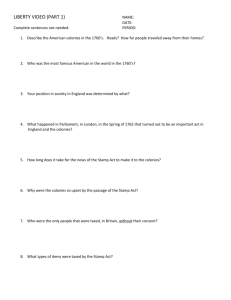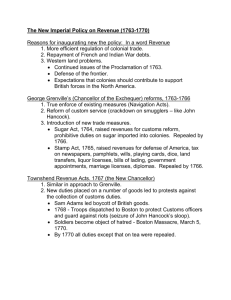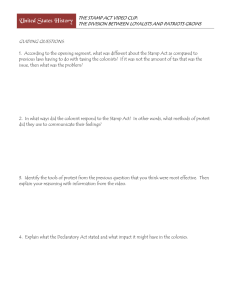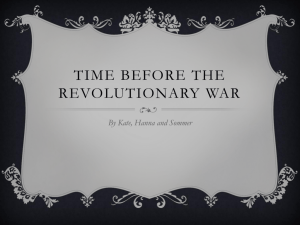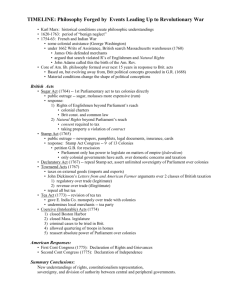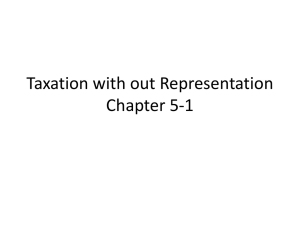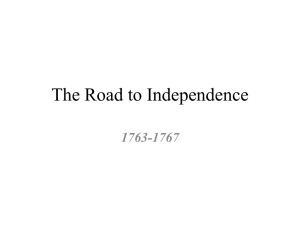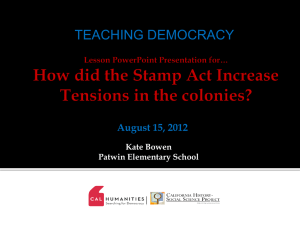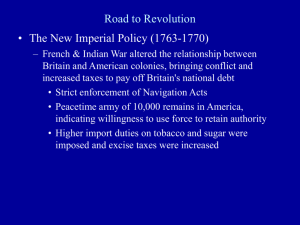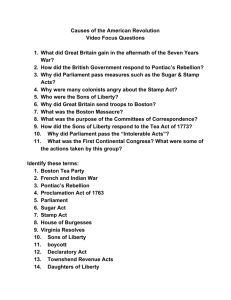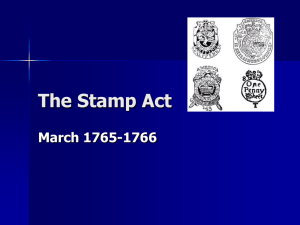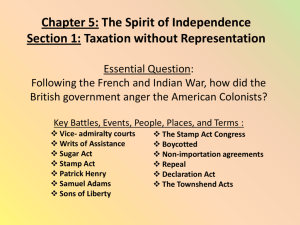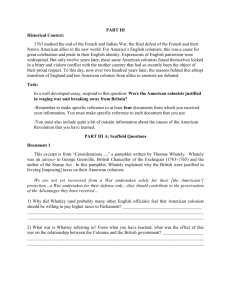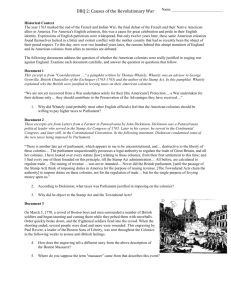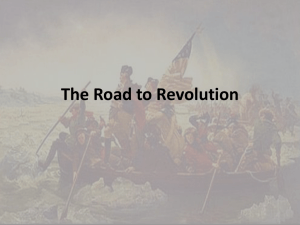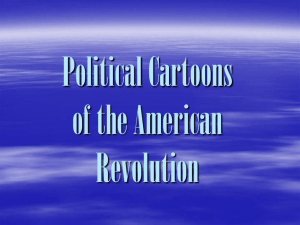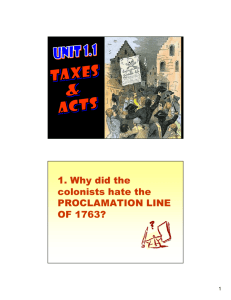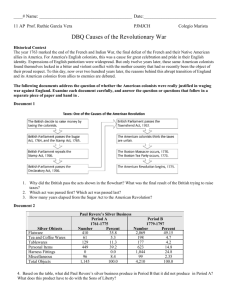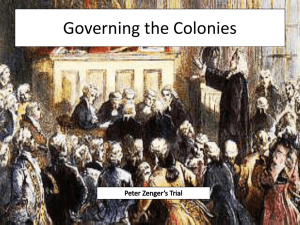The Stamp Act
advertisement
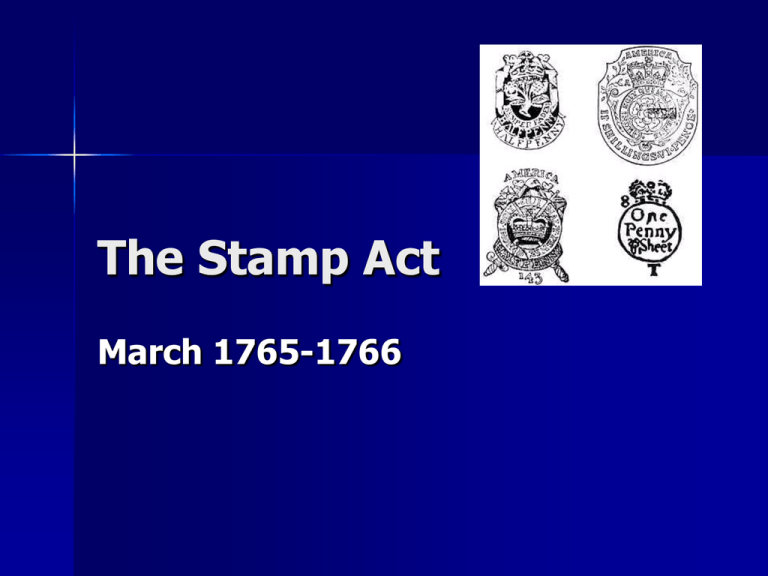
The Stamp Act March 1765-1766 The Plot The Stamp Act was a tax passed by the British Parliament on the Colonies to help pay for the F/I War and to fund a permanent military force in the colonies. It taxed things like paper, diplomas, playing cards, etc. This act was passed without debate in Parliament … didn’t even occur to them that it was illegal. Key People Figures and Groups Prime Minister George Grenville Patrick Henry – gave a speech in the House of Burgesses against the Stamp Act Sons of Liberty – first terrorist group in America. Samuel Adams was a member. It was a secret society made up of merchants and people directly affected. Colonists King George III (“Mad” King George). Parliament – passed taxes on colonies Ben Franklin spoke to Parliament against the Stamp Act. Outcomes Stamp Act Congress. 9 Colonies sent a letter to Parliament and King explaining position Boycotts – colonists say they won’t buy the taxed goods (merchants in NYC against importing British goods) Non-importation Agreements Sons of Liberty (tar & feather) & Daughters of Liberty (boycott foreign made goods, homespun clothes became symbol of resistance), and rioting in NYC (burned gov’s coach in bonfire, destroyed tax collector’s house) Repeal of Stamp Act March 1766 Declaratory Act of 1766: we are still the boss! Townshend Acts from Champagne Charlie: paint, glass, lead, tea, etc. Historical Significance/Importance One of the things that eventually leads us to the Revolution. British violating cherished idea of “NO TAXATION WITHOUT REPRESENTATION …” Colonies asserting their will for the first time British response: Colonies are disobedient children who need to be shown their place. Stamp Act Protests Tar and Feathering
